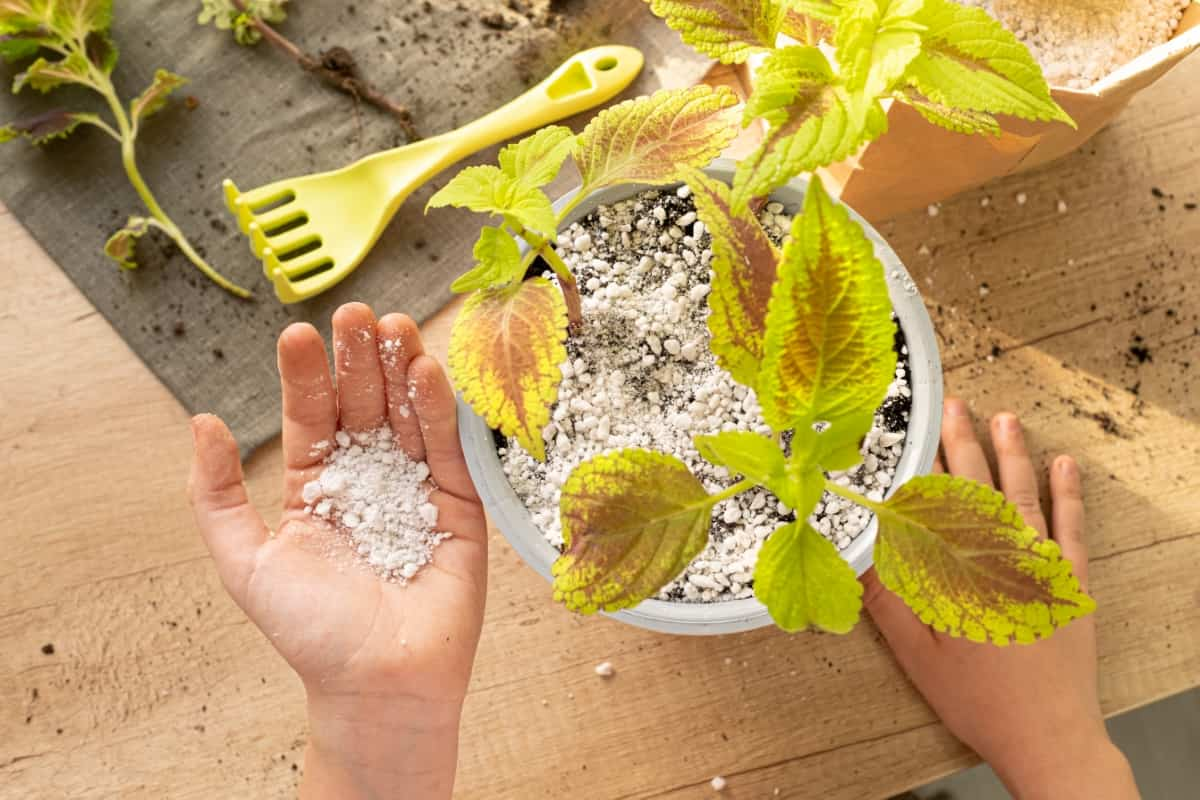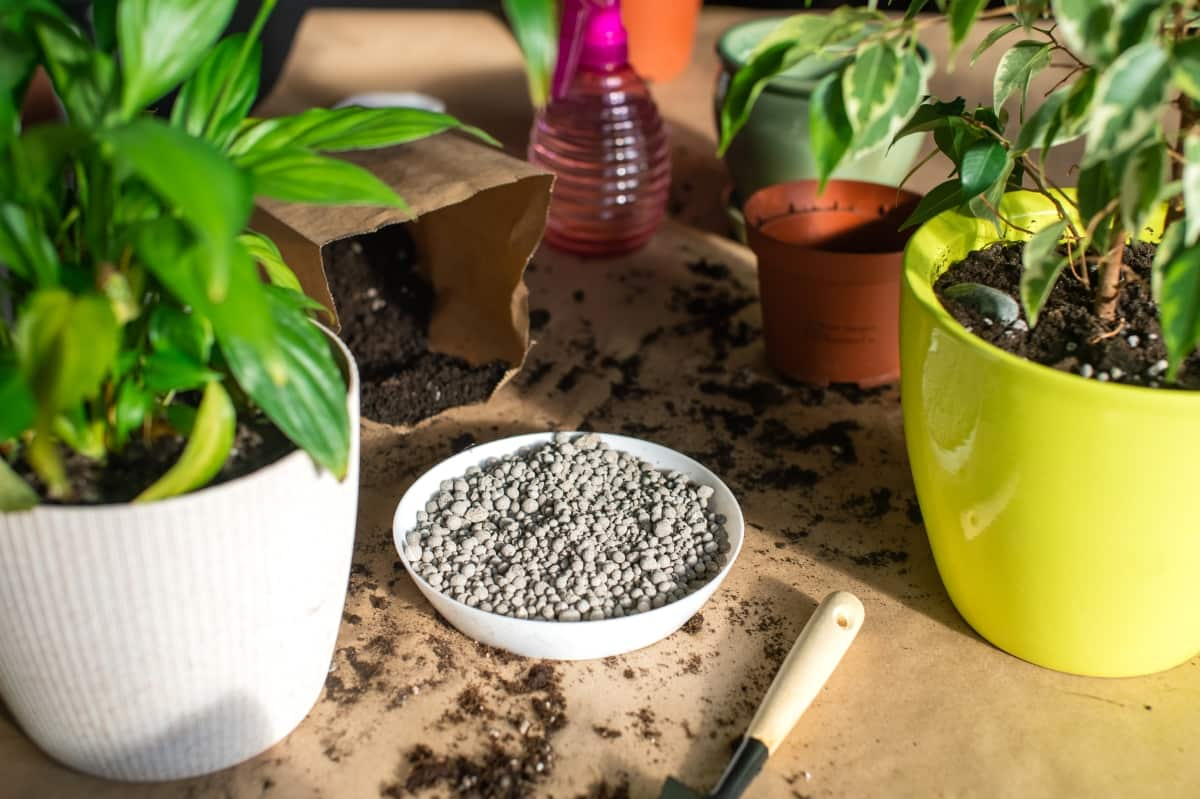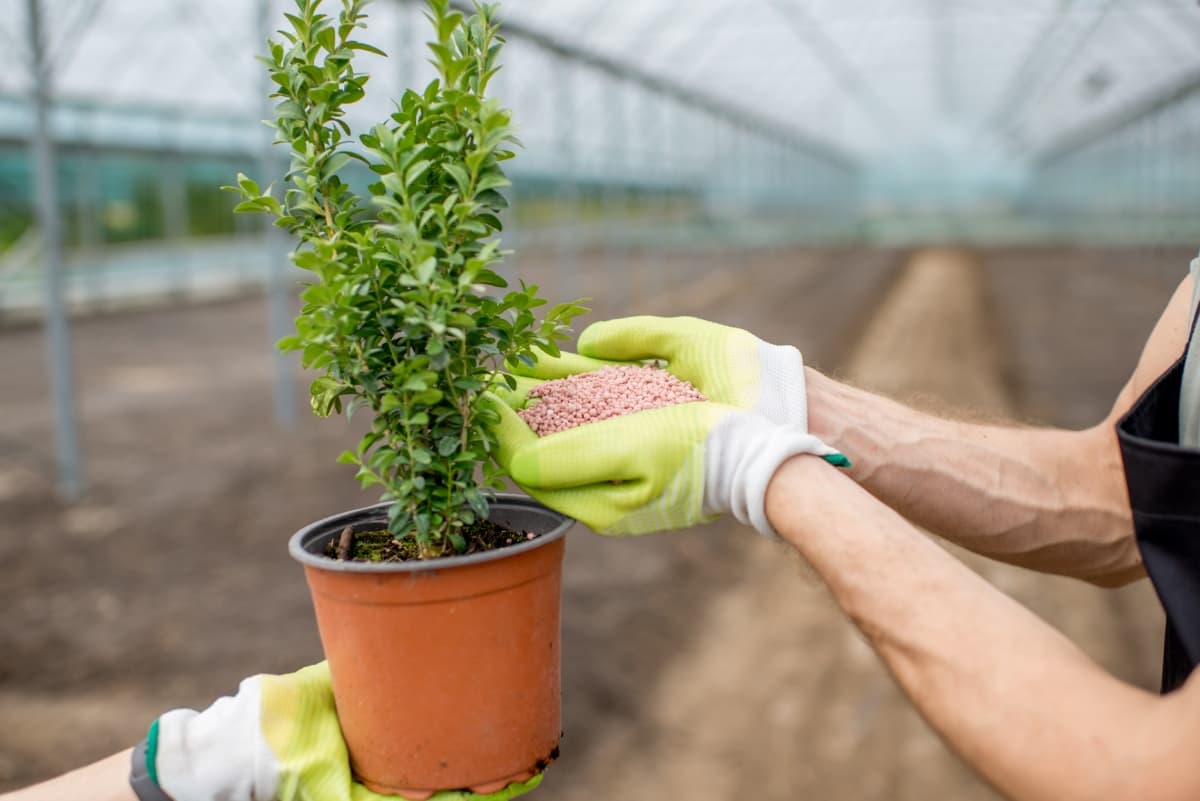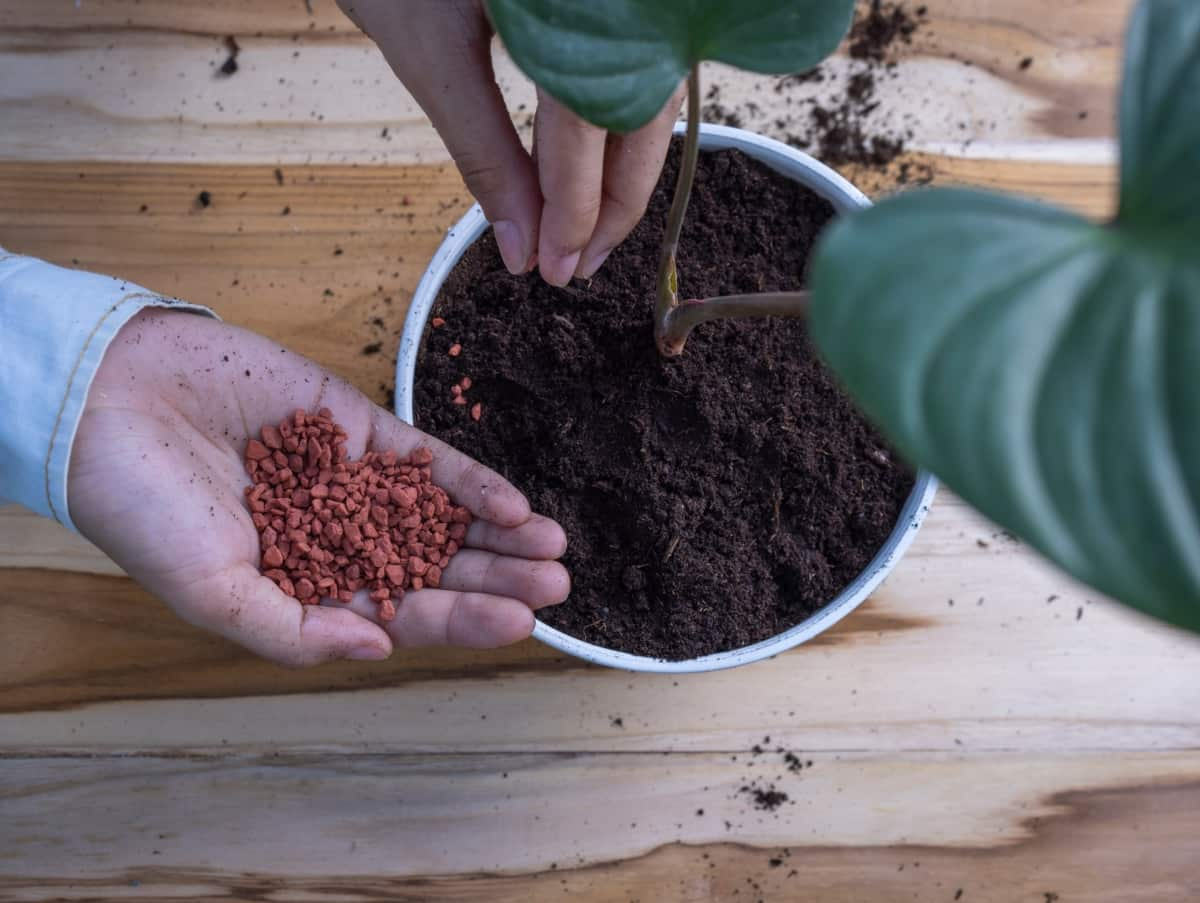NPK fertilizer is like a secret weapon for potted plants – it’s the superhero they need to thrive and grow beautifully. Applying NPK fertilizer to potted plants is a crucial step in ensuring their growth and health. By understanding the NPK ratios, choosing the right fertilizer, and following the proper application techniques, you can provide your plants with the nutrients they need to thrive. Remember to consider the type of plant you are fertilizing and its specific needs when selecting an NPK fertilizer.

Applying NPK Fertilizer for Potted Plants
Understand Plant Nutrient Needs
Plants, like humans, have specific nutrient needs to thrive. Understanding what these needs are is crucial for their overall health and growth. Different plants require varying levels of nutrients, such as nitrogen, phosphorus, and potassium, to flourish. Nitrogen is essential for leafy green growth and overall plant vigor.
Phosphorus aids in root and flower development. Potassium helps with disease resistance. By familiarizing yourself with the specific nutrient requirements of your potted plants, you can provide them with the necessary elements they need to thrive. This knowledge will help you choose the right NPK fertilizer that suits your plants’ individual needs best.
Choose the Appropriate NPK Fertilizer
Choosing the appropriate NPK fertilizer for your potted plants is key to their overall health and growth. Start by identifying your plants’ specific nutrient needs—whether they require more nitrogen, phosphorus, or potassium to thrive. This knowledge will help you select the right fertilizer blend.
Consider factors like plant type, growth stage, and current soil conditions when deciding on the NPK ratio for potted plants. Different plants have varying requirements, so it’s essential to match them with the correct formulation. Opt for a balanced fertilizer with nitrogen, phosphorus, and potassium if you’re unsure about your plant’s needs. This general-purpose option can provide a good foundation for most potted plants.
Assess Plant Health
Assessing the health of your potted plants is crucial before applying any fertilizer. Look for yellowing leaves, stunted growth, or leaf discoloration. Check for pests or diseases that may affect your plant’s overall well-being. Inspect the soil moisture levels to ensure it’s not too dry or waterlogged.
In case you missed it: Nourish to Flourish: The Best NPK Ratio for Houseplants

Consider the plant’s specific needs based on its species and growth stage. Different plants require different nutrients at varying times. Take note of any recent changes in your plant’s appearance or behavior, as these could indicate underlying issues. By staying attentive to your plant’s well-being, you can ensure it thrives in your home environment without encountering unnecessary setbacks.
Follow Dosage Instructions
To ensure the health and vitality of your potted plants, it’s crucial to follow dosage instructions when applying NPK fertilizer to houseplants. Each type of fertilizer has specific guidelines on how much to use for different plant varieties and sizes. Exceeding or underutilizing the recommended dosage can lead to nutrient imbalances, affecting the overall well-being of your plants.
Always take the time to read and understand the instructions provided by the manufacturer. These guidelines are designed to help you achieve optimal results without causing harm to your plants. Remember that more is not always better when it comes to fertilizing – stick to the recommended amounts for best outcomes. Over-fertilization can result in nutrient buildup in the soil, leading to root damage and stunted growth. On the other hand, under-fertilization may deprive your plants of essential nutrients needed for healthy development.
Prepare the Plant and Soil
Before applying NPK fertilizer to potted plants, it’s crucial to ensure that both the plant and soil are prepared for the process. Start by gently watering the plant a day or two before fertilizing to avoid stressing it. This will also help the soil absorb the nutrients more effectively. Inspect the plant for any signs of nutrient deficiencies or pest issues that may be affecting its health.
Loosen up the top layer of soil around the plant using a small hand tool like a trowel or fork. This will help aerate the roots and improve drainage, allowing the fertilizer to penetrate deeper into the soil where it’s needed most. Take your time during this step, as proper preparation sets a solid foundation for successful fertilization. By ensuring that both your plant and soil are ready, you’re setting yourself up for healthier growth and vibrant blooms down the line.
Measure Fertilizer Accurately
Accurately measuring fertilizer is crucial to ensuring your potted plants get the right amount of nutrients without risking damage. Investing in a good-quality measuring tool, such as a scoop or scale, can help you achieve precision in your application. Take note of the size of your plant containers and adjust the measurements accordingly. Remember that different plants may have varying nutrient requirements.
In case you missed it: Benefits of NPK in Hydroponic Farming: How it Works and Why it is Important?

Apply Fertilizer Evenly
Uneven application can lead to some parts of the plant receiving too much while others get too little, impacting overall growth and health. To apply fertilizer evenly, start by dividing the recommended amount into smaller portions. This way, you can cover different areas of the pot more uniformly. Sprinkle the fertilizer gently across the soil surface rather than dumping it in one spot.
Another tip is to mix the fertilizer with some soil before spreading it over the top layer. This helps prevent concentrated pockets of nutrients that could potentially harm your plant’s roots. Remember to rotate your pot as you apply the fertilizer to ensure all sides receive an equal share.
Incorporate Fertilizer Into the Soil
To ensure your potted plants receive the full benefits of NPK fertilizer, it’s crucial to incorporate the fertilizer into the soil effectively. This step allows for better nutrient absorption and utilization by the roots of your plants. Start by gently mixing the fertilizer into the top layer of soil around each plant.
Be careful not to disturb the roots while doing so. You want to create a balanced distribution throughout the root zone. Use a small hand trowel or gardening fork to blend the fertilizer evenly into the soil. This will help prevent any concentrated pockets that could potentially harm your plants or lead to uneven growth.
Water Immediately After Application
After applying NPK fertilizer to potted plants, it’s crucial to water them immediately. Water helps the nutrients in the fertilizer dissolve and reach the plant’s roots effectively. Without proper watering, the nutrients may not be absorbed efficiently, leading to potential nutrient deficiencies or even burning of the plant’s roots.
Watering also helps prevent any potential damage caused by concentrated fertilizer coming into direct contact with delicate root systems. It helps dilute excess nutrients that could harm your plants if left unchecked. Make sure to water thoroughly, but avoid overwatering as it can cause issues like root rot. Monitor how your plants respond after fertilizing and adjust your watering routine accordingly for optimal growth and health.
Monitor and Adjust Applications as Needed
It’s crucial to monitor your potted plants after applying NPK fertilizer. Monitor their growth and overall health regularly to ensure they are thriving. Look out for yellowing leaves or stunted growth. Adjust the frequency and amount of fertilizer application based on your plant’s response. If you notice any issues, don’t hesitate to tweak your fertilization schedule accordingly. Remember, each plant is unique and may have different needs.
In case you missed it: Best Fertilizer for Grapefruit Trees: Organic, NPK Ratio, How and When to Apply

Stay proactive and observant when caring for your potted plants. By monitoring them closely and making necessary adjustments, you’ll provide the best possible environment for healthy growth.
Conclusion
Applying NPK fertilizer to potted plants is a crucial step in ensuring their health. By understanding your plant’s nutrient needs, choosing the right fertilizer, following dosage instructions, and applying it correctly, you can help your plants thrive. Remember to monitor your plants regularly and adjust as needed to keep them happy and healthy. With these essential tips, you can enjoy beautiful and flourishing potted plants all year round.
- Flower Garden Designs and Layouts for Beginners
- Planting and Spacing Techniques in Papaya: A Beginner’s Guide
- Growing Gold: Essential Techniques for Planting Pineapples
- How to Make Kalanchoe Plant Bushy: Home Remedies and Solutions
- 11 Reasons Why Your Gardenia is Not Blooming: Home Remedies and Solutions
- Eco Elegance: The Guide to Designing a Drought-Tolerant Landscape
- Gardening on a Slope: Strategies for Hillside Landscaping
- Nourish and Flourish: Top Organic Mulches for Thriving House Plants
- Everything You Want to Know about Indian Mogra Flower: Discover Uses and Growing